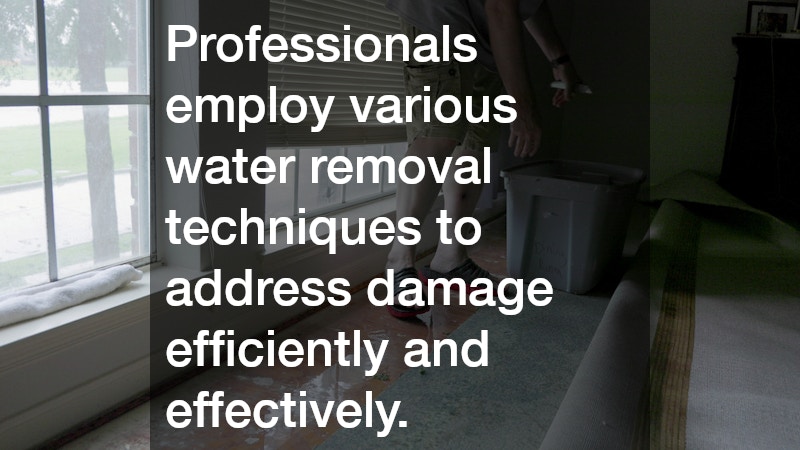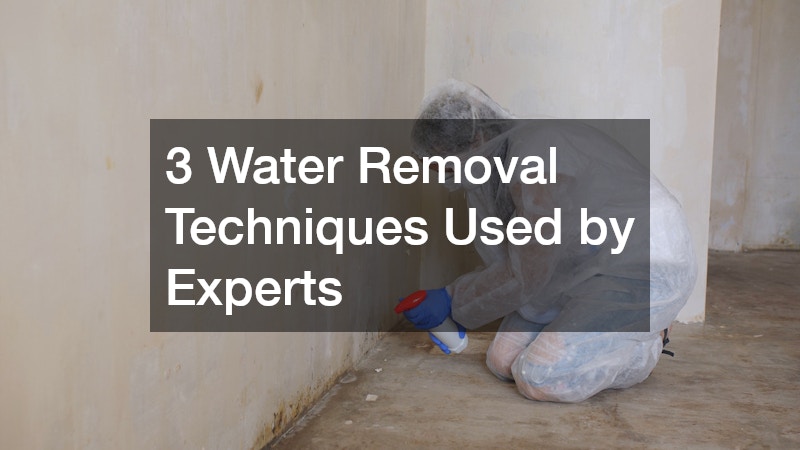In this article, we’ll explore effective techniques for water removal, highlighting methods utilized by industry experts. Water damage can occur due to various reasons and requires proper handling.
Section 1: What Are the Most Effective Water Removal Techniques?
1.1 Pumping Systems
1.1.1 Submersible Pumps
Submersible pumps are crucial for rapid, large-scale water removal, especially in basements where flooding is common. They operate by being fully submerged in water, providing a highly efficient method to evacuate water swiftly.
The primary advantage of submersible pumps is that they stay cool during operation, thus offering continuous performance without overheating. Additionally, these pumps can handle water with debris, making them versatile for various underwater conditions.
1.1.2 Centrifugal Pumps
Centrifugal pumps, ideal for moving large volumes of water, operate based on rotational energy. They utilize an impeller to create centrifugal force, propelling water through the pump system efficiently.
These pumps are beneficial in both residential and industrial settings, thanks to their ability to manage large-scale water removal efficiently. Furthermore, their simplistic design allows for low maintenance and prolonged durability.
1.2 Dehumidification Process
1.2.1 Refrigerant Dehumidifiers
Refrigerant dehumidifiers are particularly effective in warm climate conditions to reduce moisture content. They work by cooling the air, condensing the moisture, and then removing it, leaving dryer air behind.
This equipment is favored in environments where high moisture removal rates are necessary, such as post-flood or post-storm situations. Their effectiveness in high-temperature areas makes them indispensable for professionals dealing with water damage in warm regions.
1.2.2 Desiccant Dehumidifiers
Desiccant dehumidifiers are particularly useful for cooler climates, utilizing absorbent materials to extract moisture from the air. Instead of cooling, they attract moisture through chemical processes using desiccants.
This type of dehumidification is advantageous in environments where temperatures fall below freezing, as they maintain effectiveness regardless of the temperature. They play a pivotal role in preserving structural integrity during cold seasons.
Section 2: How Do Experts Determine the Appropriate Water Removal Technique?
2.1 Importance of Water Source Assessment
2.1.1 Identifying Clean vs. Contaminated Water
Identifying whether water is clean or contaminated is the first crucial assessment step for experts. This distinction influences safety precautions and the selection of an appropriate removal technique.
Clean water, often from plumbing leaks, typically requires simpler techniques compared to contaminated categories such as sewage. Assessing water source cleanliness ensures the right method is utilized without overlooking potential health hazards.
2.1.2 Evaluating the Extent of Water Damage
Accurately evaluating the extent of water damage is essential for planning the required scale and resources for the removal process. This assessment not only considers visible damage but also the potential for hidden moisture.
Experts utilize comprehensive evaluations to map out the full impact of water exposure on various structures. Detailed assessments help avoid underestimating the resources necessary for efficient water removal.
2.2 Role of Advanced Technology
2.2.1 Use of Moisture Meters
The use of moisture meters ensures measurement accuracy, crucial for detecting unseen water presence within structures. These devices enable professionals to pinpoint moisture levels in building materials accurately.
2.2.2 Thermal Imaging Cameras
Thermal imaging cameras offer a visual representation of wet areas not visible to the naked eye, making them invaluable in water damage assessments. These cameras detect temperature variations indicative of moisture presence.
This technology enables experts to map hidden dampness behind walls, ceilings, and floors, ensuring no moisture-laden areas are overlooked. Their ability to visualize humidity distribution improves efficiency in locating problem spots.
Section 3: How Do Professionals Ensure Thorough Water Removal?
3.1 Continuous Monitoring
3.1.1 Regular Moisture Checks
Regular moisture checks ensure that all residual moisture is efficiently removed, preventing potential future damage. These checks are crucial in verifying the thoroughness of the initial removal efforts.
Experts implement a systematic schedule for moisture monitoring post-removal to address any recurring dampness effectively. This diligence helps sustain the integrity of the restored space by addressing any relapse scenarios promptly.
3.1.2 Air Quality Testing
Air quality testing is implemented to prevent the growth of mold and other harmful microorganisms after water removal. This testing verifies that humid conditions are adequately mitigated, ensuring a healthy environment.
Maintaining high air quality standards post-removal is critical, particularly in locations previously inundated with water. Professionals utilize air quality metrics to guide further steps, if necessary, in the restoration process.
3.2 Post-Removal Procedures
3.2.1 Structural Drying Techniques
Structural drying techniques, employed after initial water removal, promote drying of floors, walls, and other structural elements. Techniques such as air movers and specialized fans target specific areas to facilitate complete evaporation.
By addressing moisture entrenched in structural materials, these techniques prevent future damage such as warping or mold development. The precision of structural drying ensures that the long-term integrity of the building is preserved.
3.2.2 Sanitization and Disinfection
Sanitization and disinfection are crucial steps to ensure health safety after water removal. This process effectively neutralizes any bacteria or pathogens introduced by the water, securing a clean restoration.
Implementing stringent sanitization protocols confirms the success of water remediation efforts, focusing on both visible and invisible contaminants. Health protection remains a top priority for experts handling contaminated water scenarios.
Professionals employ various water removal techniques to address damage efficiently and effectively. Understanding these methods and their applications can significantly enhance post-water-damage recovery efforts.



